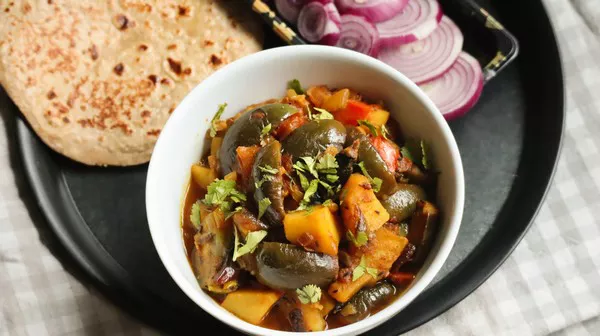In a surprising turn of events, the popular Indian dish, Aloo Baingan, has secured the 60th position on Taste Atlas’ recently released “Top 100 Worst-Rated Foods in the World” list. Known for its distinct blend of potatoes, brinjal/eggplant, onions, tomatoes, ginger-garlic paste, spices, and a garnish of coriander leaves, Aloo Baingan has long been a staple in Indian households. However, the dish received a modest rating of 2.7 out of 5, sparking both surprise and disagreement among Indian food enthusiasts.
While Bharta and Chokha, two other dishes featuring brinjal, enjoy widespread popularity, it seems Aloo Baingan has faced international criticism on the global culinary stage. Often served with Tawa Roti, the gravy-based Aloo Baingan has found itself in a contentious position, with its recent ranking as one of the least favored foods globally.
The dubious honor of claiming the top spot on the list went to ‘Hakarl’ from Iceland, a dish made from cured shark meat that undergoes a three-month fermentation process. With its pungent taste and a serving method involving a toothpick alongside a local spirit called ‘brennivin,’ Hakarl has proven to be an acquired taste. The high ammonia content, resulting in a potentially choking experience, earned it the title of the worst-rated food globally.
Securing the second position was the Ramen Burger from the United States. This unique creation features a burger crafted with a ramen noodle bun and stuffed with a meat patty. Although the Ramen Burger may intrigue adventurous eaters, it landed near the top of the list, signaling a divisive reception.
The third spot was claimed by Yerushalmi Kugel from Jerusalem, a casserole dish that combines noodles with caramelized sugar. Revered as a sweet delicacy enjoyed during popular Jewish holidays, Yerushalmi Kugel’s unexpected appearance on the list adds another layer of diversity to the selection of poorly rated global foods.
As the debate on Aloo Baingan’s placement continues, it is clear that Taste Atlas’ “Top 100 Worst-Rated Foods in the World” has stirred conversations and opinions on culinary preferences, transcending borders and cultural divides.

